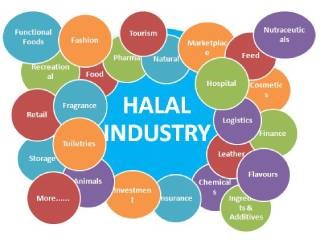UNCATEGORIZED
The Development of Artificial Intelligence in the People’s Republic of China
Published
2 years agoon
By
Editor
In this article, we will examine one by one the points that do not yet enable studies and developments on artificial intelligence in the People’s Republic of China to rise to 100% of the international advanced level.
I) Economic benefits come first: lack of vision
Many AI companies and some local governments lack vision and pursue short-term economic benefits, hoping to achieve clear economic returns within one-two or two-three years. This results in a large number of AI start-ups eager for quick success, albeit with lack of confidence and weak development.
Economic benefits must be pursued, but high-tech sectors or the sectors that use AI technology to promote the transformation and upgrading of other sectors and their development, should follow specific laws, as well as require a constitutive process and a certain level of success, and not a premature search for immediate profits.
II) The general level of artificial intelligence must be improved as a matter of urgency
Despite the late start of national AI and the lack of participation in the development of corresponding international AI technologies, patents and standards, in China many scientific research institutes and enterprises are participating in research and technology development and, in some areas, are basically at the same level or even leading compared to foreign countries. However, the overall capacity and level of AI in China are far from the international level and there is still a significant gap between the general level of basic AI research and the advanced level. There is still a long way to go in order to reach this level as a whole and it will take time.
III) The national decision-making process still needs to be put in place
Although China has announced a number of development plans related to artificial intelligence, such as the Intelligent Manufacturing 2025, the Robot Industry Development Plan (2016-2020) and the Three-Year Plan for implementing the Action for Artificial Intelligence on the Internet, etc., no national strategy for the global development of AI has been developed yet. The above-mentioned programme plans must also turn policy plans into targeted actions and into visible benefits.
IV) State financial support must be further improved.
As mentioned in previous articles, China has supported AI research and related science and technology projects in many national scientific research and technology development plans, and support is increasing. However, compared to AI on the Internet, as well as intelligent manufacturing and other projects, in response to the investment of some developed countries in Europe and the United States of America, China’s financial support for AI scientific research and industrial development is far from sufficient.
Moreover, compared to other projects, AI needs to analyse more problems, and involve a wider range of players – hence everything becomes harder and requires greater national support.
V) The allocation of funds for scientific research is not sufficiently fair and equitable
From time to time the allocation of funds for scientific research has long been controversial. Firstly, the limited funds have not been used for the most important and urgent projects, but have been evenly distributed – thus resulting “too equal” – between some projects that did not urgently need funds and those that, on the contrary, needed key support. Secondly, some members of the “expert group” allocating funds to projects use their power for personal gain, and sometimes even collude with each other to induce certain funding. For a while, this had become an unwritten rule. Thirdly, the evaluation and use of funds for scientific research lack effective supervision, and these problems also exist in the field of AI.
VI) Citizens are concerned about the AI development
Since AI has been conceived as a component of the civil society, its social impact has attracted widespread attention among people. Some people are concerned about the emergence and development of AI (software) and intelligent robots (hardware supported by said software), fearing that AI and intelligent machines will one day threaten the survival and development of human beings. The greatest scientist who referred to this danger was Stephen Hawking (1942-2018). As one of the world’s most influential physicists, he was concerned that the use of AI technology to create machines that could think independently would eventually threaten the survival of humanity. Hawking stated: “The full development of artificial intelligence may lead to the extinction of human beings”. The echo of his views has been grasped by many citizens, scientists and technicians. There is obviously another viewpoint of society: it is believed that although AI has made great progress after sixty years of development, the general level of AI in the near future will never be such as to surpass human intelligence. We add, however, that since progress is constant on a geometric scale, there will always be a point of no return. The question is the following: will we be able to control, but mainly to define this point of no return and block it at “-x from”?
Nevertheless, some people – in our opinion, in a reckless and senseless manner – argue that we must instead attach great importance to the impact of AI itself on human society, and not waste time on researching and formulating countermeasures – the “-x from” – to quell public concerns and ensure human security.
VII) A race can lead to wild competition
Some historians and scientists believe that there is a sort of traditional culture in Chinese society, i.e. a phenomenon that flourishes everywhere and expresses in the same way in many parts of the country. They add that these expressions are elaborate, refined and sophisticated, but they cannot guarantee the quality of the product, thus causing a huge waste of resources and manpower, and ultimately bring neither economic nor social benefits. This was the case in the past for large-scale steel production – the failure of the Great Leap Forward of 1958-1961 – as well as for large-scale jet aircraft technology and thyristor devices (the Silicon Controlled Rectifier, which is a component that, from an electrical viewpoint, is almost equivalent to the diode, with the only difference that direct conduction occurs only after applying an appropriate trigger signal on a third terminal called gate), and in the current automotive production, industrial robot parks and drone development. At present, there is not only overcapacity in the automotive sector, but most of the companies in the robotics industrial park are facing a difficult situation of wild competition and risk being wiped out in the near future.
China’s AI and its industry have currently attracted unprecedented attention from the government and all walks of society. Fortunately, the phenomenon of the AI industry popping up and flourishing everywhere without any criteria has not occurred. The threshold for the technological starting point of the AI industry is relatively high and the difficulty and risk of starting and developing a business are equally high. There may be fewer entrepreneurs with courage and strength than robot entrepreneurs, and hopefully the robot industry park will repeat the proliferation phenomenon.
VIII) Blind optimism and arrogance are detrimental to development
Many perceptive people believe that there is a big gap between the current national AI basic research, application development and international advanced level. Some national AI researchers and developers, however, overestimate their achievements, believing that national AI has surpassed the international advanced level in many respects.
In view of assessing whether a discipline has reached or surpassed the international advanced level, not only must unbiased and equal international standards be generally recognised, but also a set of convincing results. We will not specifically discuss the issue in this article, but we would like to describe the level of AI development in China from the status of the Turing Award, the highest scientific and technological award in the international computing and IT sector.
Since 1966 the US Association for Computing Machinery (ACM) has organised 55 editions of the Turing Award, with a total of 75 winners, considering that in some editions there were more than one winner.
Winners include the Chinese-American computer scientist from Shanghai, Yao Qizhi, who won the award in 2000, with the Theory of Computation, including pseudo-random number generation, cryptography and communication complexity.
China won the international supercomputer speed championship several times. This is a result which is worth celebrating, but all this is not enough to prove that China’s AI technology has reached the international advanced level. Although the AI development of many national corporate giants has made quick progress and their achievements are rewarding, China has not yet reached the level of international leadership.
Large international companies and developed countries in Europe, America and Japan have invested heavily in their efforts to reach a dominant position in such global competition. The secret lies in not being blindly optimistic and never overestimate one’s own achievements.
IX) There is a tendency to replace research on artificial intelligence with philosophical research
Artificial intelligence, though not belonging to the humanities branch, has philosophical questions to put on the table. Some scholars carry out research ranging from AI to philosophy of information or other philosophical perspectives, which are necessary and worthy of support. For a long time, however, there has been a tendency in China to replace AI research with philosophical research, as well as to exaggerate the role of philosophical issues over AI technical aspects, and even try to dominate AI disciplines with philosophy.
There is a need, instead, for down-to-earth research on the main AI issues. Prof. Wu Wenjun (1919-2017), a mathematician and academic known for his contributions in the areas of differential geometry, topology and computational geometry, once seriously warned: “Our real intention is never to argue with words, and to talk with letters. What we should do is work hard and do it skilfully. Taking advantage of the great opportunity opened up by the advent of the computer era, we should take the lead in promoting the mechanisation of mental work in the world and show our ideas to the planet with concrete results”.
10) International cooperation should be further strengthened
China has promoted considerable international cooperation in the AI field, including the organisation of international conferences, travels abroad to attend international conferences, and the sending of staff to take part in international AI research on a cooperative basis. These activities not only need to be expanded, but also the level of cooperation results needs to be improved. It must be said that international cooperation on AI must be further strengthened so that the “international” status of Chinese scholars will be further enhanced. (8. continued).
Related
You may like
-


WEF and UN-Habitat Join Forces to Unlock Critical Investment in Cities through Public-Private Collaboration
-


5 ways countries can adapt to the climate crisis
-


The Development of Artificial Intelligence in China: Conclusions
-


Four ways the planetary crisis is impacting mental health
-


New European Bauhaus under Cohesion Policy: €50 million call for innovative projects in cities
-


The Development of Artificial Intelligence in China: Investment and attention to production
UNCATEGORIZED
7 Trends Reshaping a USD 3.9 Trillion Global Halal Industry
Published
5 months agoon
January 2, 2024By
Editor
The Global Halal Market (GHM) is not just growing, it’s exploding. Driven by a surging Muslim population, rising disposable incomes, and shifting consumer preferences, this behemoth is projected to reach a staggering USD 3.9 trillion by 2027. But what’s driving this explosive growth? Buckle up, because 2024 promises a thrilling ride fueled by cutting-edge technology, ethical consumerism, and personalized convenience. Here’s your deep dive into the 7 hottest trends reshaping the global halal landscape:
Halal Tech Revolution: Where Silicon Valley Meets Mecca
Forget clunky processes and opaque sourcing. The halal industry is getting a tech makeover, and it’s about time. Blockchain is ensuring ethical sourcing and transparent supply chains, from farm to fork. Imagine halal meat traced back to its free-range roots, with every step documented on a tamper-proof digital ledger. Artificial intelligence is optimizing slaughterhouses, automating processes, and ensuring humane treatment of animals. Halal e-commerce platforms are booming, bringing convenience and halal-certified products to Muslim consumers worldwide. Think Amazon, but with prayer apps, virtual tours of halal farms, and even halal-compliant fintech solutions – the future of halal is digital and delicious!
Ethical Halal: Beyond Compliance, Embracing Values
Muslim consumers are no longer satisfied with just a halal label. They crave sustainability, animal welfare, and organic goodness. Expect a surge in plant-based halal options, from juicy burgers to creamy milkshakes made with innovative pea protein and lentil blends. Ethically sourced meat, raised on antibiotic-free feed and roaming in spacious pastures, will be the new gold standard. And get ready for a beauty revolution: cruelty-free cosmetics and hygiene products that adhere to Islamic principles will pamper consumers with peace of mind.
Convenience is King: Busy Lives, Halal Solutions
In today’s fast-paced world, convenience reigns supreme. The halal industry is taking note, with solutions tailor-made for busy Muslim lives. Subscription meal kits will deliver pre-portioned, halal-certified ingredients straight to doorsteps, complete with recipe cards for stress-free meal prep. Halal food delivery apps will take the guesswork out of dining out, connecting users with a curated selection of restaurants and cafes offering delicious and compliant meals. And for those special occasions, on-demand halal catering will ensure stress-free gatherings, leaving hosts free to enjoy the festivities.
Beyond Food: The Halal Universe Expands
The halal industry is shedding its “food-only” label and branching out into exciting new frontiers. Halal travel is booming, with destinations vying for Muslim tourists by offering halal amenities, prayer spaces, and culturally sensitive experiences. Imagine exploring Marrakech’s vibrant souks or unwinding on a pristine Maldives beach, all while knowing your needs are catered to. Halal cosmetics are gaining traction, with innovative brands formulating products free of alcohol, animal derivatives, and harsh chemicals. And even the pharmaceutical industry is taking notice, developing halal-compliant medications and healthcare products that align with Islamic principles.
Science & Innovation: Reimagining Halal with Cutting-Edge Tech
Research labs are not just churning out papers; they’re cooking up a futuristic halal feast. Lab-grown halal meat is no longer science fiction, with companies like Eat Just and Aleph Farms creating meat indistinguishable from its conventional counterpart, but without the ethical and environmental concerns. Plant-based alternatives are evolving beyond bland tofu, with innovative textures and flavors mimicking everything from juicy steaks to succulent lamb shanks. Get ready for halal food reimagined with cutting-edge technology, offering delicious and sustainable options for the future.
Health & Wellness: Halal Goes Holistic
Muslim consumers are prioritizing their well-being like never before. Enter functional halal foods infused with ingredients like probiotics, antioxidants, and adaptogens, designed to nourish the body and mind. Sports nutrition is another burgeoning market, with protein powders and energy bars formulated specifically for Muslim athletes seeking halal-compliant performance boosters. And for those managing chronic conditions, dietary supplements tailored to diabetes management, weight loss, or heart health will offer halal solutions for holistic well-being.
Storytelling & Branding: Building Trust, Shaping Perceptions
In a crowded marketplace, differentiating your brand is key. The halal industry is catching on, embracing compelling narratives and values-driven branding. Showcase your commitment to ethical sourcing, sustainability, and community engagement. Share inspiring stories of the farmers who raise your halal meat, the scientists developing innovative food technologies, or the communities you empower through your business practices. By building trust and aligning with consumer values, halal brands can stand out.
Embrace the Halal Revolution:2024 is not just a year on the calendar; it’s the dawn of a new era for the halal industry. By harnessing the power of technology, embracing ethical values, and catering to evolving consumer needs, halal businesses can tap into a USD 3.9 trillion market brimming with potential. So, whether you’re a food producer, travel blogger, or tech whiz, join the halal revolution. Optimize your offerings, tell your story, and connect with Muslim consumers worldwide. The future of halal is bright, and the time to act is now.
HALAL ECONOMY
Beyond Andalusia: Exploring Spain’s Islamic Heritage through Halal Tourism
Published
5 months agoon
December 24, 2023By
Editor
Spain’s evolving landscape of Muslim-friendly tourism is a testament to its rich Islamic history and its commitment to embracing diverse cultural needs. As we head into 2023, projections indicate a staggering 85 million international visitors to Spain, a 16.4% increase from the previous year, highlighting the country’s growing appeal as a global tourist destination. A significant portion of these tourists are from Muslim-majority countries, drawn to Spain’s Islamic heritage and the burgeoning availability of Halal services and tailored cultural experiences.
The Rise of Halal Tourism in Spain
Spain’s shift towards accommodating Muslim tourists is evident in the increasing number of Halal-certified establishments and services. The Spanish Halal Institute has reported a surge in businesses seeking Halal certification, a rise from 100 in 2010 to over 500 in recent years. This growth is not only a response to the rising Muslim visitor numbers but also a strategic move by Spanish businesses to tap into the lucrative Muslim market.
Muslim-friendly Services Across Spain
Beyond the traditionally popular Andalucía, other regions in Spain are adapting to the needs of Muslim tourists. Cities like Barcelona, Toledo, and Madrid now offer a range of Halal dining options, prayer facilities, and culturally sensitive services. For instance, the Mandarin Oriental in Barcelona, a Halal-certified hotel, offers amenities tailored to Muslim guests, including prayer mats and Halal food options. Similarly, the Costa del Sol Hotel in Torremolinos has trained its staff in Muslim culture and traditions, enhancing the experience for its Muslim clientele.
Cultural and Historical Tourism
Spain’s Islamic history, particularly the legacy of Al-Andalus, is a major draw for Muslim visitors. Educational initiatives like walking tours in Toledo, led by Aicha Fernández, and Madrid’s Muslim and Arab heritage tours, organized by Rafael Martínez, provide insights into Spain’s rich Islamic past. These tours are not just tourist attractions but educational experiences, offering deep dives into the historical and cultural significance of Spain’s Islamic era.
Economic Impact and Market Potential
The economic potential of Muslim-friendly tourism in Spain is immense. According to a report by the State of the Islamic Economy (2022), the global Muslim population, a significant portion of which belongs to the rising middle class, is increasingly travel-savvy and demands tailored services. This presents a lucrative opportunity for Spanish businesses in the tourism sector.
Government Initiatives and Recognition
The Spanish government’s role in promoting Muslim-friendly tourism is pivotal. Efforts like the creation of Halal tourism guides by municipalities like Málaga, which won recognition at the Halal In Travel Global Summit in Singapore, underscore the national commitment to positioning Spain as a Muslim-friendly destination.
Challenges and Opportunities
Despite the progress, challenges remain. Celia Rodríguez, a Spanish revert, notes the scarcity of Halal options in some regions and the need for better-informed services for Muslim tourists. This gap presents an opportunity for businesses to further tailor their offerings and improve communication with Muslim clients.
Global Context and Future Prospects
Globally, the trend towards Muslim-friendly tourism is gaining momentum, with countries like South Korea and Japan also emerging as popular destinations. Spain’s strategic approach to embracing and catering to the needs of Muslim tourists not only enhances its competitive edge in the global tourism market but also promotes cultural understanding and inclusivity.
UNCATEGORIZED
TB Research Shows a Good Diet can cut Infections by Nearly 50%
Published
9 months agoon
August 28, 2023By
Editor
| Tuberculosis is the single most deadly infectious killer of humankind. It claimed 1.6 million lives in 2021 alone. As the search for effective ways to fight the disease continues, the findings of new research offer hope: a good diet can cut infections by nearly 50%. Yogan Pillay and Madhukar Pai write that nutrition is a vaccine in all but name. |
For centuries, we have known that tuberculosis is a social disease. It thrives on poverty and social factors such as malnutrition, poor housing, overcrowding, unsafe work environments and stigma. Globally in 2021 an estimated 2.2 million cases of TB were attributable to undernourishment, 0.86 million to HIV infection, 0.74 million to alcohol use disorders, 0.69 million to smoking and 0.37 million to diabetes.
But knowledge about social determinants alone does not always translate into tangible action and progress. A new trial in India, called RATIONS, aimed to determine the effect of nutritional supplementation on new cases of tuberculosis in households of adults with pulmonary TB. The research found that providing food baskets to people with TB and their households could go a long way to prevent and mitigate the disease.
No easy silver bullets
The TB community has typically looked for biomedical solutions, or “silver bullets”, for a social pathology, and we are struggling to make progress. Since the COVID pandemic, TB mortality and incidence have increased globally, putting TB back on top as the single most deadly infectious killer of humankind. In 2021, 1.6 million people died of TB. In Africa, TB incidence is high (212 per 100,000 population) with a high case fatality rate because of the HIV epidemic.
Undernutrition is the most important cause of TB. This has been shown in studies in many countries, including South Africa, where researchers found poor levels of nutrition in patients admitted to a specialized TB hospital. Malnutrition refers to all forms of deficiencies in nutrition, including over-nutrition and obesity. Undernutrition refers more specifically to a deficiency of nutrients. While we know that many patients with TB have poor nutrition, the latest evidence is that undernutrition also plays a key role in TB within households.
The results of the Reducing Activation of Tuberculosis by Improvement of Nutritional Status (RATIONS) trial show that improved nutrition in family members of patients with lung TB reduced all forms of TB by nearly 40%, and infectious TB by nearly 50%.
This trial recruited 10,345 household members of 2,800 patients with lung TB.
- All TB patients received a monthly 10kg food basket (rice, pulses, milk powder, oil) and multivitamins for six months.
- In one group family members received 5kg rice and 1.5kg pulses per person per month, while the other group of family members did not get food baskets.
Food worked like a vaccine in this trial, cutting the risk of household members developing TB. Nutrition could also protect against other conditions such as anaemia, diarrhoea and respiratory infections, but these were not not the main focus of the trial. An accompanying paper, based on the results of the RATIONS trial, showed that severe undernutrition was present in nearly half of all patients.
An early weight gain in the first two months was associated with 60% lower risk of TB mortality. The other benefits were higher treatment success and better weight gain. During the six-month follow-up period, a remarkable treatment success rate of 94% was achieved.
Getting food to patients
How expensive was the intervention? The cost of a food basket was US$13 per TB patient per month and US$4 per household member per month and could be delivered, even in rural areas, using field staff. Even before the RATIONS trial, the Indian government had recognised the need for nutrition support for people with TB, and in 2018 launched “Nikshay Poshan Yojana”, a direct benefit transfer scheme. Under this scheme, each TB patient receives a financial incentive of US$6 per month for the duration of the anti-TB treatment (typically, six months for people with drug-sensitive TB).
Emerging data suggests that while the scheme improves the treatment completion rates among patients with TB in India, they often receive their payments late. There is a need to improve the efficiency and provide timely payments.
The new RATIONS trial suggests that directly providing food baskets may be another effective strategy.
Many countries, including India, have other social security programmes, including public distribution systems to provide food grains at subsidised prices. Using existing channels to provide extra food rations to people with TB, and expanding the menu to include proteins such as pulses and millets, is a strategy worth exploring. This could also have positive effects on other diseases such as diabetes.
Implications for South Africa
South Africa is one of the countries labelled by the World Health Organization as a “high TB burden country”.
What does this latest research mean for South Africa? Statistics South Africa reported that in 2021 2.6 million people had inadequate access to food and a further 1.1 million stated they had “severe” inadequate access to food. More than 683,000 children five years and younger experienced hunger.
This toxic mix requires prevention of TB by nutritional support, drugs to prevent TB infections and early diagnosis with molecular tests and treatment.
With high levels of food insecurity and undernutrition in South Africa, fuelled by the highest levels of inequality, it is critical that South Africa includes social benefits for people with TB and those in their households to reduce the prevalence of TB in the country and to meet the Sustainable Development Goals for 2030.
Regardless of how social benefits are distributed, action must be based on evidence. We need better tests, cures and vaccines for TB, but they alone cannot end the epidemic. TB patients must be provided with the social benefits that they need and deserve, as a basic human right.
Courtesy: The Conversation

HLISB Introduces BizHalal To Support SMEs in the Global Halal Market

HAQQ Network Advances Islamic Web3 with Gold Token and Real World Assets

ICD and JSC Ziraat Bank Collaborate to Boost Uzbekistan’s Private Sector
Topics
- AGRIBUSINESS & AGRICULTURE
- BUSINESS & ECONOMY
- DIGITAL ECONOMY & TECHNOLOGY
- EDITORIAL
- ENERGY
- EVENTS & ANNOUNCEMENTS
- HALAL ECONOMY
- HEALTH & EDUCATION
- IN CASE YOU MISSED IT
- INTERNATIONAL POLITICS
- ISLAMIC FINANCE & CAPITAL MARKETS
- KNOWLEDGE CENTRE, CULTURE & INTERVIEWS
- OBITUARY
- OPINION
- PROFILE
- PUBLICATIONS
- SPECIAL FEATURES/ECONOMIC FOOTPRINTS
- SPECIAL REPORTS
- SUSTAINABILITY & CLIMATE CHANGE
- THIS WEEK'S TOP STORIES
- TRENDING
- UNCATEGORIZED
- UNITED NATIONS SDGS
Trending
-

 TRENDING11 months ago
TRENDING11 months agoAFRIEF Congratulates New Zamfara State Governor
-

 PROFILE9 months ago
PROFILE9 months agoA Salutary Tribute to General Ibrahim Badamasi Babangida: Architect of Islamic Finance in Nigeria
-

 BUSINESS & ECONOMY3 years ago
BUSINESS & ECONOMY3 years agoClimate Policy In Indonesia: An Unending Progress For The Future Generation
-

 BUSINESS & ECONOMY3 years ago
BUSINESS & ECONOMY3 years agoThe Climate Crisis is Now ‘Code Red’: We Can’t Afford to Wait Any Longer
-

 BUSINESS & ECONOMY3 years ago
BUSINESS & ECONOMY3 years agoIPCC report: ‘Code red’ for human driven global heating
-

 HALAL ECONOMY10 months ago
HALAL ECONOMY10 months agoRevolutionizing Halal Education Through Technology
-

 SPECIAL REPORTS5 months ago
SPECIAL REPORTS5 months agoRemembering Maryam Ibrahim Babangida: A Legacy of Grace, Philanthropy, and Leadership
-

 BUSINESS & ECONOMY2 years ago
BUSINESS & ECONOMY2 years agoDistributed Infrastructure: A Solution to Africa’s Urbanization

